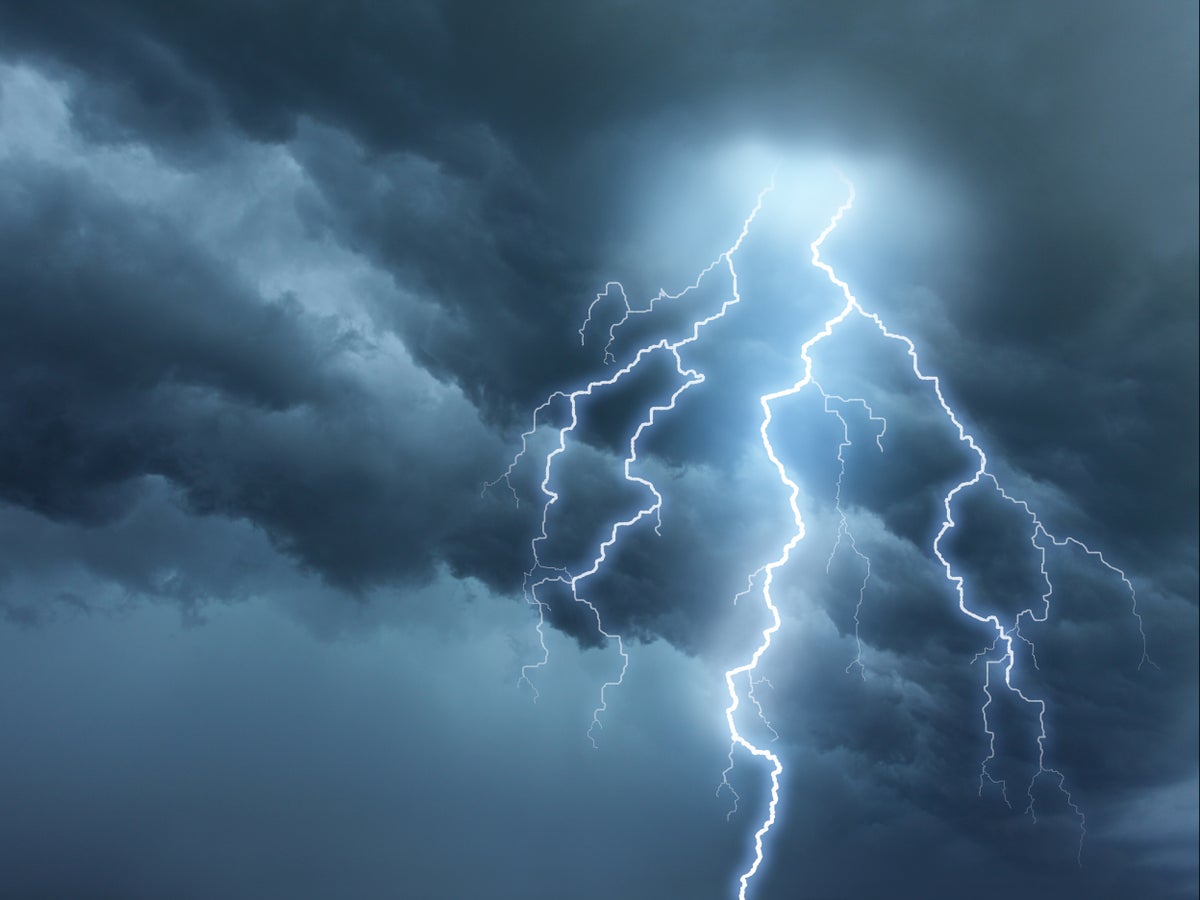
The Met Office has issued a “danger to life” thunderstorm warning as torrential rain is expected to hit much the UK after a four-day heatwave.
Heavy rain and thunderstorms could cause flooding in both cities and rural areas, but it won’t be enough to end the drought declared on Friday, experts have warned.
Here we answer some key questions about thunderstorms and why they happen during prolonged hot weather.
Why do thunderstorms happen during heatwaves?
The hot weather and humidity during a heatwave creates ideal conditions for thunderstorms.
According to the Met Office, thunderstorms develop when the atmosphere is unstable and there is moisture.
This is when warm air exists underneath much colder air.
They often develop in the afternoon after the progressive heating during the early part of the day.
Stephen Dixon, a spokesperson for the Met Office, told The Independent: “Thunderstorms develop when warm air is closer to the surface of the Earth and cooler air above it.
“That warmer air rises and that mixing with the cooler air is what causes the instability and water droplets to form.
“It’s fairly common at this time of year to see thunderstorms of this nature.”
How common are thunderstorms?
Thunderstorms are common occurrences.
It is estimated that a lightning strike hits somewhere on the Earth’s surface approximately 44 times every second, a total of nearly 1.4 billion lightning strikes every year.
Owing to the fact thunderstorms are created by intense heating of the Earth's surface, they are most common in areas of the globe where the weather is hot and humid.
Landmasses, therefore, experience more storms than oceans and thunderstorms are also more frequent in tropical areas than higher latitudes.
In the UK, thunderstorms are most common over the East Midlands and the southeast of England.
What is a thunderstorm?
A thunderstorm can be described as one or more sudden electrical discharges, manifested by sudden flashes of light (lightning) and a sharp or rumbling sound (thunder).
Thunderstorms are associated with convective clouds and are most often, but not necessarily, accompanied by precipitation such as rain or hail.
There are estimated to be as few as five thunderstorm days in the UK in a quiet year and up to 20 or more during a quiet one, according to the Met Office.







